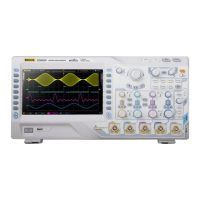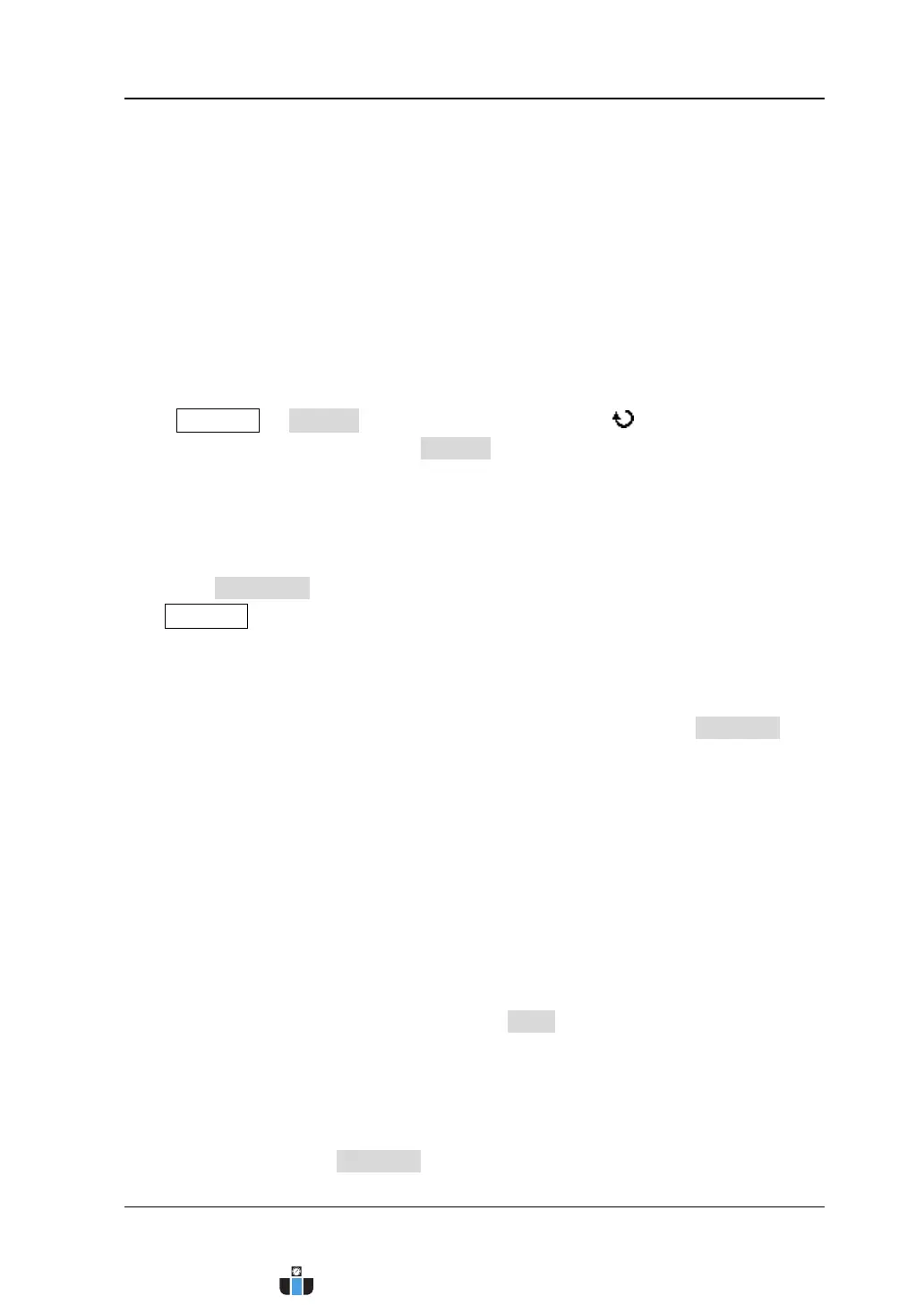Chapter 8 Protocol Decoding RIGOL
MSO4000/DS4000 User’s Guide 8-7
RS232 Decoding (Option)
The RS232 serial bus consists of the transmitting data line (TX) and the receiving
data line (RX). Its frame format is as shown in Figure 5-2
. In RS232 decoding, you
need to set the start bit, data bit width, check bit and stop bit for each frame of data.
Note: Industry standard RS232 uses “Negative Logic”, namely high level is logic “0”
and low level is logic “1”.
Press Decode1 Decode, turn the multi-function knob to select “RS232” and
press the knob. You can also press Decode continuously to switch to “RS232”.
Set the RS232 decoding (take Decode1 as an example):
1. Turn on or off the Decode1
Press BusStatus to turn the Decode1 display on or off. You can also press
Decode1 to switch the current on/off status of the Decode1 display. When the
bus display is turned on, the interface is as shown in Figure 8-3.
2. Quickly apply the current RS232 trigger setting to RS232 decoding
If the current trigger type of the trigger system is RS232, press CopyTrig to
copy the current RS232 trigger settings and apply them to the RS232 decoding
function (set the corresponding RS232 decoding parameters automatically). The
settings can be copied include the source channel, polarity, stop bit, even-odd
check mode, data bits and baud rate.
For the source channel, the trigger source channel will be copied to the TX
source channel in the decoding. If the source channel is an analog channel,
the threshold level setting will also be copied.
Note: The source channel of RX is set to “None” automatically.
When executing the copy operation, Baud in the decoding is automatically
set to “User” and the user-defined value is the same as the baud rate in the
trigger.
Note: The copy function is only available when the current trigger type is
“RS232”; otherwise, CopyTrig is not available.
www.calcert.com sales@calcert.com1.800.544.2843
0
5
10
15
20
25
30

